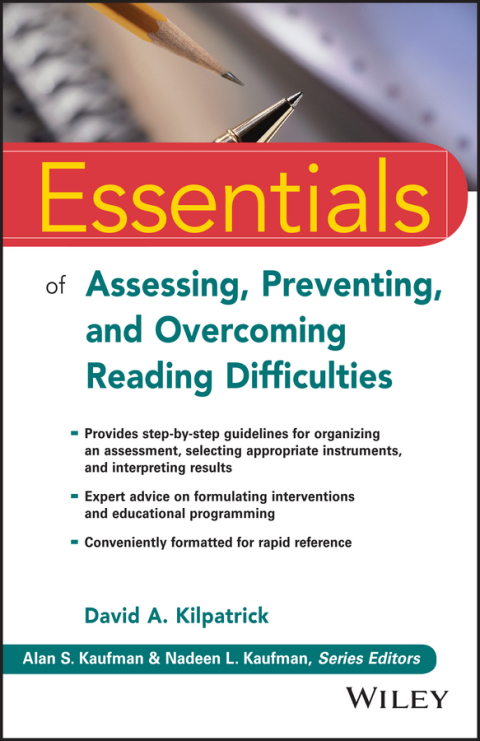Description
Efnisyfirlit
- Title Page
- Copyright
- Dedication
- Series Preface
- Preface
- Acknowledgments
- Chapter One: Introduction
- The Unfair Race
- The Importance of Reading
- The Gap Between Reading Research and Classroom Practice
- The Unfortunate Reality About Reading Research: Nobody Knows About It!
- Why Is There a Gap Between Research and Classroom Practice?
- The Powerful Research Results We Have Been Missing
- Acknowledging and Responding to the Gap Between Research and Practice
- Summary
- Chapter Two: How We Teach Reading and Why It Does Not Work With Struggling Readers
- A Very Brief History of Reading Instruction
- Why Our Current Approaches to Reading Instruction Are Ineffective With Struggling Readers
- The Visual Memory Hypothesis of Word Reading
- The Three Cueing Systems Model of Reading
- The Phonics Approach to Reading
- Summary
- Chapter Three: A Practical Framework for Understanding and Assessing Reading Skills
- The Simple View of Reading
- Types of Reading Difficulties/Disabilities
- The Components of Reading
- The Components of Word-Level Reading
- The Components of Linguistic Comprehension
- Summary
- Chapter Four: Understanding Word Recognition Difficulties
- The Importance of This Chapter
- Introducing Orthographic Mapping
- How Skilled Word Reading Develops
- The Early Stages of the Reading Process
- Learning to Read Irregular Words
- The Research on Orthographic Mapping
- How the Phonological-Core Deficit Hinders Reading Development
- Word-Reading Fluency and Orthographic Mapping
- Students Whose Native Language Is Not English
- Answers to the Questions Posed About Reading Difficulties
- Summary
- Chapter Five: Understanding Reading Comprehension Difficulties
- Specific Reading Comprehension Impairment
- What Is Required for Skilled Reading Comprehension?
- Reader Abilities
- Text Factors
- Task Factors
- Students Whose First Language Is Not English
- Summary
- Chapter Six: Assessing Phonological Processing Skills
- An Introduction to Intervention-Oriented Assessment of Reading
- Issues in Assessing Phonological Skills
- Phonological Awareness Assessment
- Phonological Blending Assessment
- The Rationale for Assessing Rapid Automatized Naming and Working Memory
- Summary
- Chapter Seven: Assessing Phonics Skills
- Orthographic Knowledge
- Assessing Phonics Skills
- Summary
- Chapter Eight: Assessing Word Identification and Reading Fluency
- The Assessment of Word-Reading Skills
- Untangling the Confound Between Word Recognition and Word Identification
- Word Identification Subtests
- The Assessment of Word-Reading Fluency
- Types of Fluency Tasks
- Summary
- Chapter Nine: Assessing Reading Comprehension and Related Skills
- Reading Comprehension Assessment
- Tests of Reading Comprehension
- Tests of Listening Comprehension
- Assessment of Skills That Contribute to Reading Comprehension and Listening Comprehension
- Summary
- Chapter Ten: Effective Approaches for Preventing Reading Difficulties
- Prevention: Removing the Hurdles Before the Race Begins
- Experimental Support for Phonological Awareness Instruction
- Experimental Support for Explicit and Systematic Letter-Sound Instruction
- Practical Considerations Regarding Teaching Letter-Sound Skills and Phonics
- The Centrality of Phonology in Word Reading
- Phonological Awareness Training Programs
- Preventing Literacy-Related Language Difficulties
- Summary
- Chapter Eleven: Effective Approaches for Overcoming or Minimizing Reading Difficulties
- Intervention with Word-Level Reading Difficulties
- Popular Reading Interventions With Modest or Minimal Results
- Reading Intervention Research With Minimal to Modest Results
- The Phonological Awareness Intervention Continuum
- Reading Intervention Studies with Highly Successful Results
- Specific Programs Used in Highly Successful Outcome Studies
- Addressing Comprehension Difficulties
- Making It Work: Practical Intervention Issues
- Summary
- Chapter Twelve: Case Illustrations
- Mild Dyslexic Pattern
- Severe Dyslexic Pattern
- ELL Student
- Compensator Pattern
- Hyperlexic Type
- Summary
- Chapter Thirteen: Reading Difficulties and Learning Disability Identification
- Far Fewer Students with SLD?
- Characteristics That Suggest an Educational Disability—Part 1: SLD in Word-Level Reading
- Characteristics That Suggest an Educational Disability—Part 2: Reading Comprehension
- General Guidelines for Identifying a Reading Disability
- Summary
- Afterword
- Glossary
- Further Reading
- References
- About the Author
- About the Online Resources
- Content Included in the Online Resources
- Index
- End User License Agreement






Reviews
There are no reviews yet.